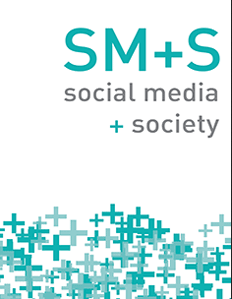游戏创伤:TikTok 创作者与战争时期平台化身体的使用
IF 5.5
1区 文学
Q1 COMMUNICATION
引用次数: 0
摘要
在俄罗斯入侵乌克兰之际,TikTok 成为了一个举足轻重的平台,创作者们利用其压缩视频格式来调解战区的残酷现实。在本文中,我们研究了 12 位乌克兰和俄罗斯 TikTok 创作者针对 2022 年乌克兰战争制作的 97 个视频。我们利用数字人种学的方法关注创伤的游戏化体现,分析创作者的实践及其在 TikTok 上相互关联的记忆交流。我们通过平台、身体和创伤交汇的三种动态实践,确定了游戏的使用:(1)在可共享模板中使用 POV(视点)美学,以引人入胜的第一人称视角传达战争的现实;(2)将舞蹈作为体现创意表达和放大创伤的一种手段;以及(3)利用平台功能,促进与追随者就战争下的生活进行异想天开的对话。我们认为,游戏性根植于平台并通过平台方言模式得以实现,推动创作者在逆境中建立社区联系,并塑造创伤的持续表征及其在数字空间中的加速可见性。我们提出了 "游戏性创伤 "的概念,以此为框架来理解当创作者利用他们的身体以及平台特有的幽默、讽刺或颠覆性方言来表演和放大创伤的严重性时所产生的结构性不和谐。这种紧张关系为创作者提供了一个独特的空间,将他们共同的悲伤和复原经验转化为参与式应对机制。在这样做的过程中,他们将自己在平台上玩耍的身体作为媒介和信息,记录不公正、见证和激励群众在战争时期采取行动。本文章由计算机程序翻译,如有差异,请以英文原文为准。
Playful Trauma: TikTok Creators and the Use of the Platformed Body in Times of War
Amid the Russian invasion of Ukraine, TikTok has emerged as a pivotal platform, where creators utilize its compressed video formats to mediate the harsh realities of war zones. In this article, we examine 97 videos produced by 12 Ukrainian and Russian TikTok creators in response to the 2022 war in Ukraine. We focus on the playful embodiment of trauma using digital ethnography, analyzing creators’ practices and their interconnected memetic communication on TikTok. We identified the use of play through three dynamic practices where platforms, bodies, and trauma converge: (1) the utilization of POV (point-of-view) aesthetic in shareable templates to convey the realities of war from engaging first-person perspectives; (2) the incorporation of dance as a means of embodied creative expression and amplification of trauma; and (3) the harnessing of platform features to facilitate whimsical dialogues with followers about life under war. We argue that playfulness is entrenched in and enacted through platform vernacular modes, driving creators to forge communal ties during adversities and shape the ongoing representation of trauma and its accelerated visibility in digital spaces. We present the concept of playful trauma as a framework for understanding the structural dissonance that arises when creators utilize their bodies alongside platform-specific humorous, ironic, or subversive dialects to perform and amplify the gravity of trauma. This tension provides a unique space for creators to convert their shared experiences of grief and resilience into participatory coping mechanisms. In doing so, they subject and harness their playful platformed body as both the medium and the message, documenting injustices, bearing witness, and galvanizing crowds into action during times of war.
求助全文
通过发布文献求助,成功后即可免费获取论文全文。
去求助
来源期刊

Social Media + Society
COMMUNICATION-
CiteScore
9.20
自引率
3.80%
发文量
111
审稿时长
12 weeks
期刊介绍:
Social Media + Society is an open access, peer-reviewed scholarly journal that focuses on the socio-cultural, political, psychological, historical, economic, legal and policy dimensions of social media in societies past, contemporary and future. We publish interdisciplinary work that draws from the social sciences, humanities and computational social sciences, reaches out to the arts and natural sciences, and we endorse mixed methods and methodologies. The journal is open to a diversity of theoretic paradigms and methodologies. The editorial vision of Social Media + Society draws inspiration from research on social media to outline a field of study poised to reflexively grow as social technologies evolve. We foster the open access of sharing of research on the social properties of media, as they manifest themselves through the uses people make of networked platforms past and present, digital and non. The journal presents a collaborative, open, and shared space, dedicated exclusively to the study of social media and their implications for societies. It facilitates state-of-the-art research on cutting-edge trends and allows scholars to focus and track trends specific to this field of study.
 求助内容:
求助内容: 应助结果提醒方式:
应助结果提醒方式:


